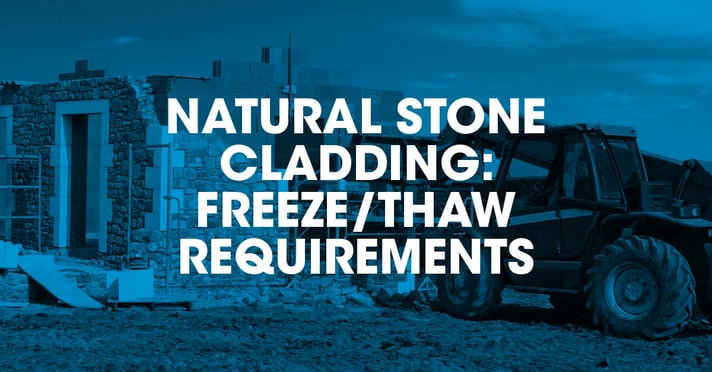Freeze/thaw resistant masonry
All masonry used as a cladding will be exposed to the elements, the degree of which is influenced by (but are not limited to):
- Degree of exposure (incidence of frost)
- Saturation of the masonry
- Location of site in respect of wind driven rain, topography and position in relation to other buildings
- Lack of protection from architectural features such as, roof overhangs, copings or cappings
- The Freeze/thaw resistance of the masonry units
Frost attack can occur through the repeated action of rain water freezing and thawing. When water turns into ice, there is increase in volume which can eventually cause stresses to masonry units and lead to spalling.
Warranty stance
Natural stone masonry must be selected by the Architect, to be based on its suitability for:
- The specific cladding proposal design requirements.
- For the specific site exposure and orientation that the building / plot will be located – using that stone.
The Architect must ensure the units are selected based on the performance of the actual sourced product and not a generic one. BS EN 771-6 specifies the characteristics and performance requirements of masonry units manufactured from natural stone.
The selected Stone performance information may be found in a Declaration of Performance document issued by the quarry supplier.
The document providing the performance information, must include, a statement from that supplier, that the selected stone units are freeze / thaw resistant.
A copy of this document must be given to the Warranty surveyor, if this information is not available, we may not be able to accept the proposed stone cladding.

